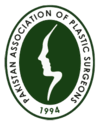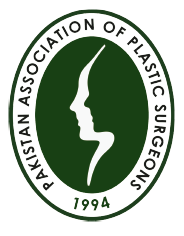Rhinoplasty is surgery that changes the shape of the nose.Person/patient usually comes to the attending surgeon with two main problems i.e. shape of the nose and breathing problem. Sometimes the patient wants to improve both.Both these problems are related to the structure of the nose. Structure is made of bone and cartilage while skin provides cover to it. Cartilage forms the tip, nostrils and septum(wall between two sides of nose) of nose ,bone forms the side walls ,while both cartilage and bone forms the roof.
The common shape problems are
Deviated nose
Abnormal shape of the tip of nose
Nostril flare (Nostril widening)
1)Deviated Nose
when the dorsum of the nose is not straight i.e. it is deviated to the left or right side and sometimes both in the form of “C” or “S” shape. It is mainly due to abnormal curvature of the septum.
Septum correction
An important part of rhinoplasty surgery involves making the septum straight and thus correcting overall deviation of the nose. It is done mainly by making vertical cuts in the septal cartilage and then depending upon its inherent strength some cartilage is added for support. Correction of septal curvature also results in normal breathing. Very rarely some part of the septum is removed to make the nose straight.
2)Abnormal shape of the tip
- Bulbous Tip: Refers to a condition that causes the tip of the nose to appear wide and round.
- Narrow Tip: Refers to a condition that causes the tip of the nose to appear narrow.
- Bifid Tip: Refers to a malformation that causes the nasal tip to appear divided into two parts.
Tip correction
Can be done either as an isolated procedure called tip plasty or as part of overall rhinoplasty.
In bulbous tips extra cartilages are trimmed so that the tip appears more narrow,in the broad tip some extra cartilages are added while in bifid tips the tip cartilages are brought in the midline without any addition or subtraction and stitched together in midline.
3) Nostril flare
As is clear from the name the nostrils appear wide
Nostril flare correction
Also called nostril reduction the flared portion of the nostril is removed in the form of wedge.The cut is made such that it is hidden in the groove between the face and nostril and does not show from face on.
Frequently Asked Questions
1)What risks are associated with rhinoplasty
As with any major surgery, rhinoplasty carries risks, however the risks are small and complications are rare. The surgeon will talk to you about risks and benefits in detail before the operation.
2) Will I need to stay in the hospital?
Almost all who have rhinoplasty are able to safely leave the hospital the same day after surgery. In rare cases, you may be required to stay in the hospital for a night if you’re having a hard time with nausea or have other health problems that need to be monitored.
3)How long is the operation?
The operation takes on average 1-2 hours depending upon its complexity.
4)What are the chances of success?
Very slight changes to the structure of the nose can make a large difference in how the nose looks. Most of the time, an experienced surgeon can get results both of you are satisfied with. But in some cases, the slight changes aren’t enough, and you and your surgeon might decide to do a second surgery for further changes. If this is the case, you must wait at least a year for the follow-up surgery, because your nose can go through changes during this time.
5) What are the alternatives to rhinoplasty?
When it comes to alternatives to cosmetic rhinoplasty, there are none. But if you’re looking to improve your breathing you can try using nasal strips as a non-surgical means of correcting the issue.
Written by : Dr. Fazlur Rahman
Copyrights: Pakistan association of Plastic Surgeons

